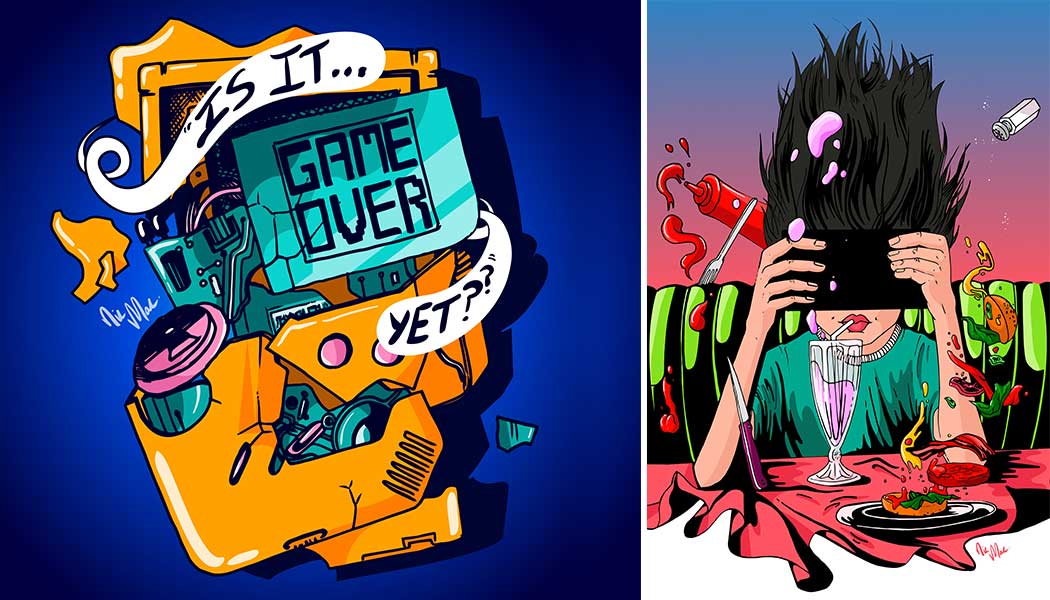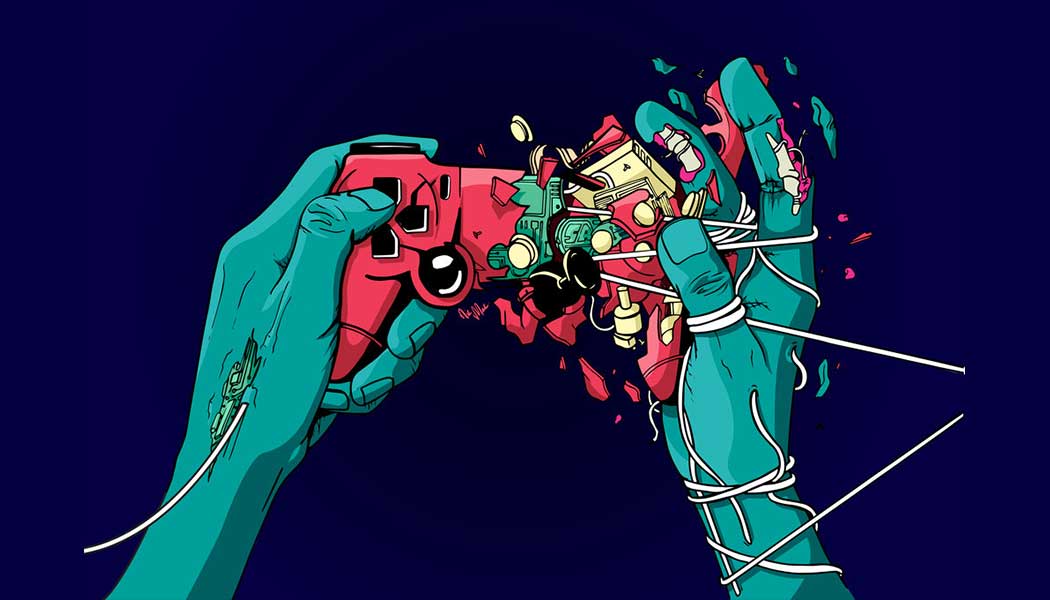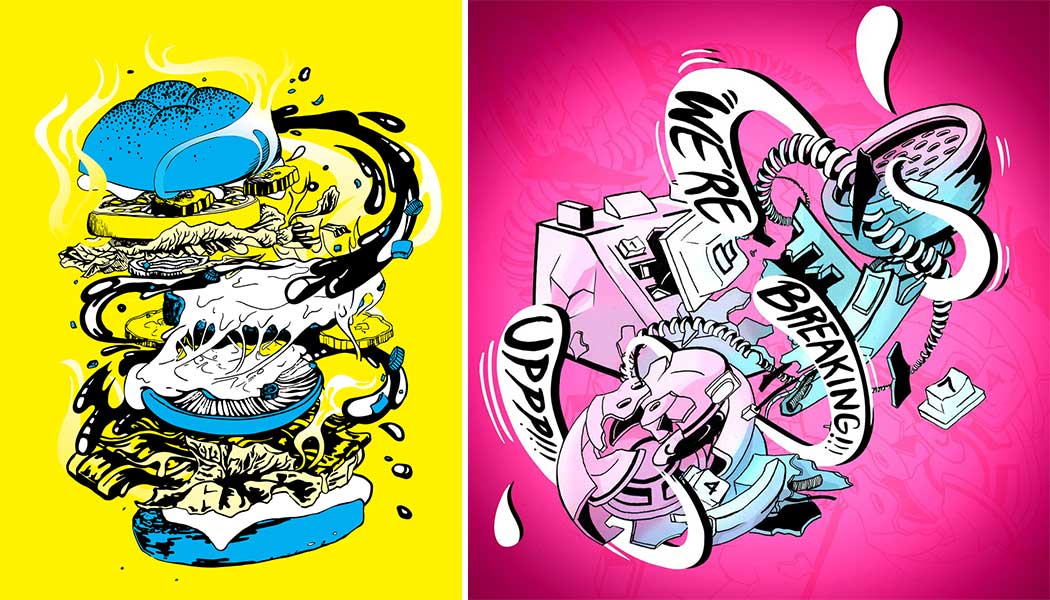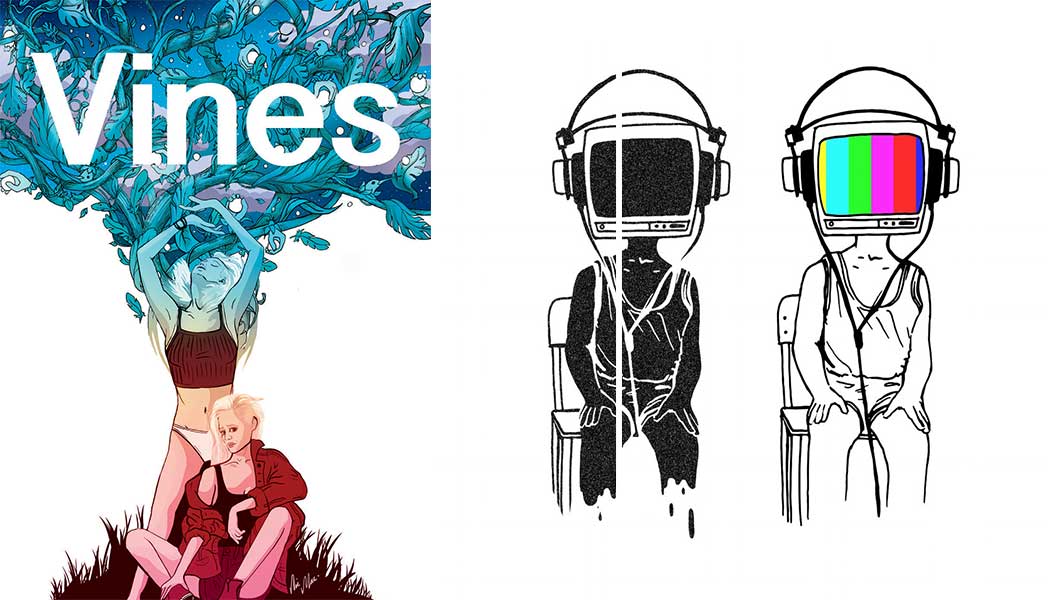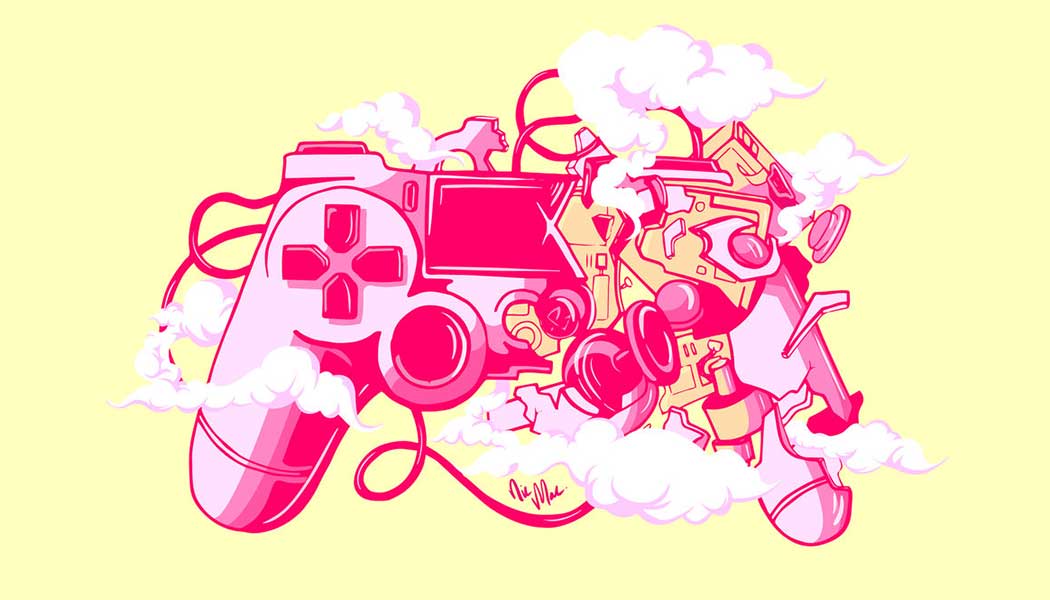The Yak caught up with illustrator Nic Mac – who designed the front cover image for Yak #62 – to talk influencers and background checks. Go.

Ms Nic Mac … where in the world are you at the moment, and how should we address you?
Hello! Well right now I’m in southwest London in Putney. And you can call me Nic.
Is that what your mother calls you?
She says she doesn’t, but I distinctly remember when I was in school, it was about a week or two that needed to pass before she would call me down for dinner with a loud “Niccc!”
How did you get into illustrating and visual art? Was it always clear this would be your path?
It’s one of those things really where you don’t realise just how drawn you are to something, excuse the pun, until it’s in every aspect of your life. As a kid, art was the only thing that I looked forward to, and as an adult, it still remains at the top of my list. I’ve been well and truly hooked, and pretty much every big decision I’ve made so far has involved art and illustration and how I can do more of it. However, as clear as it was to me, that I wanted to do it. It wasn’t always clear that I could. There was a lot of self doubt in the beginning, and it took quite some work to push past life’s little hurdles. But as much as they may try and knock you off your ‘path’, you can’t really be swayed from the thing you love, especially once you’ve tasted it.
Who are your greatest influences?
I’ve been influenced by artists from a whole range of styles and disciplines, and the list keeps growing and morphing especially with more and more street artists like Pichiavo, Nychos and Dulk having really inspired me in the last year. Though there are definitely some big players that remain at the top of my list for specific reasons. Gerald Scarf has influenced me ever since I heard him talk about caricatures and how he kept pushing the boundaries of what a face could be, and constantly morphing the forms further and really playing with it. There’s a particular piece he did in the ’70s where he drew Ian Fleming as James Bond and it remains one of my favourite illustrations. Not only is it a brilliantly eye catching piece of art, but it has a hidden truth behind the dramatically morphed and colourful forms, and when you really look at it, you’re faced with a shocking scene that is humorously ugly and actually quite pornographic. I could talk forever about different artists but one I’d like to mention, who is probably the most unassuming player, is Albert Giacometti. I suppose when artists talk of work that inspires them, there’s an assumption it will be very similar work that reflects a likeness or an element that makes sense. But with Giacometti, it is how he was as an artist that inspired me the most, and in turn has made me one of his biggest fans. You see it was his passion and his dedication to his craft. He was obsessed and sometimes I feel that is how you have got to be. You have got to be obsessed with creating. Because the more you obsess the more you create and the closer you might get to really being able to speak and communicate your message effectively through your art.
Were you hyper into comics when you were younger?
Miniature me was generally hyper, running up the walls and such but I only read Beano, which I loved, especially Billy the Wizz. I didn’t truly get into comics and graphic novels until I was at University. Speech bubbles in comic art and the way movement is depicted with kinetic shapes and colours really inspires me. I always aim to inject movement into my work and definitely have flicked to comic book fight scenes for some inspiration.
How much of your illustrating is related to the world’s current problems?
Not as much as I would like. I wish that everything I made could be powerful and relevant but it would be a lot of pressure. I always want my work to communicate something, whether it’s an important issue I want to highlight, an emotion or simply an observation I have of this modern world. A lot of the time, particularly recently, I have been conscious to let loose and doodle just for the sake of it.
What’s your goal when you set about a new illustration?
To make it as good as I can make it. To make sure it communicates as well as being something I genuinely want to draw, something I am excited by. Without passion it won’t work, it will have a flatness to it. This is what I like about the challenge of some commercial illustrations and commissions I may work on. Being able to find something within the brief that sparks your imagination, making it work for you, to ensure that what is created has soul to it.
What’s a typical day like for you?
My days usually start off with having written a to-do list the night before and then trying my best throughout the day to follow through with it all. I work from home usually but if I really want to focus, I’ll go out to a public work area and I have a couple of freelancer friends and sometimes we will stake out a table at a pub or coffee shop and work together. I suppose it’s the budget equivalent of having the shared studio space!
What’s the biggest block to creativity for you?
The main thing that blocks my creativity is simply when I’ve not allowed myself to be creative. It’s sounds so simple but it’s all too easy to get lost in something, and it may even be a project where you’ve been drawing all week! But for me ‘creativity’ is more than the act of creating itself. For a lot of times it can be very disciplined and precise, especially when working on commissions. True creativity is freedom of imagination, and randomness, it’s your inner child running around and causing havoc. So I’ll always remind myself to let loose on a personal project or just make a mess with paint and break up the routine a bit to ward off any creative blocks.
OK let’s talk about that wave … If we’re not wrong, it’s a of reimagining of a famous image, no?
Indeed it is, The Great Wave of Hokusai is one of the most celebrated pieces of Japanese art. And taking something so recognisable and injecting a different narrative to it was something that has really resonated with people. The shapes of the white surf in the original image were a perfect canvas, they had always seemed quite threatening to me, with the sharp spiked shapes of the wild water. So turning those into plastic bags echoed the threat I originally felt. The piece represents something of the past, something that also represents the untouched beauty of nature and how I’ve propelled it into the modern age, to warn and highlight what is to come if we continue, as we have.
What’s next for you Nic?
I’m planning more murals this year, and am particularly excited about one for the Migration Matters Festival in Sheffield with the aim of highlighting a positive message to the community. Mostly keeping my shop stocked with prints and drawing, drawing, drawing, I’m currently looking for an agent too, so give me a shout if you know anyone! I also have an exciting new project that I look forward to sharing in March. Watch this space.

